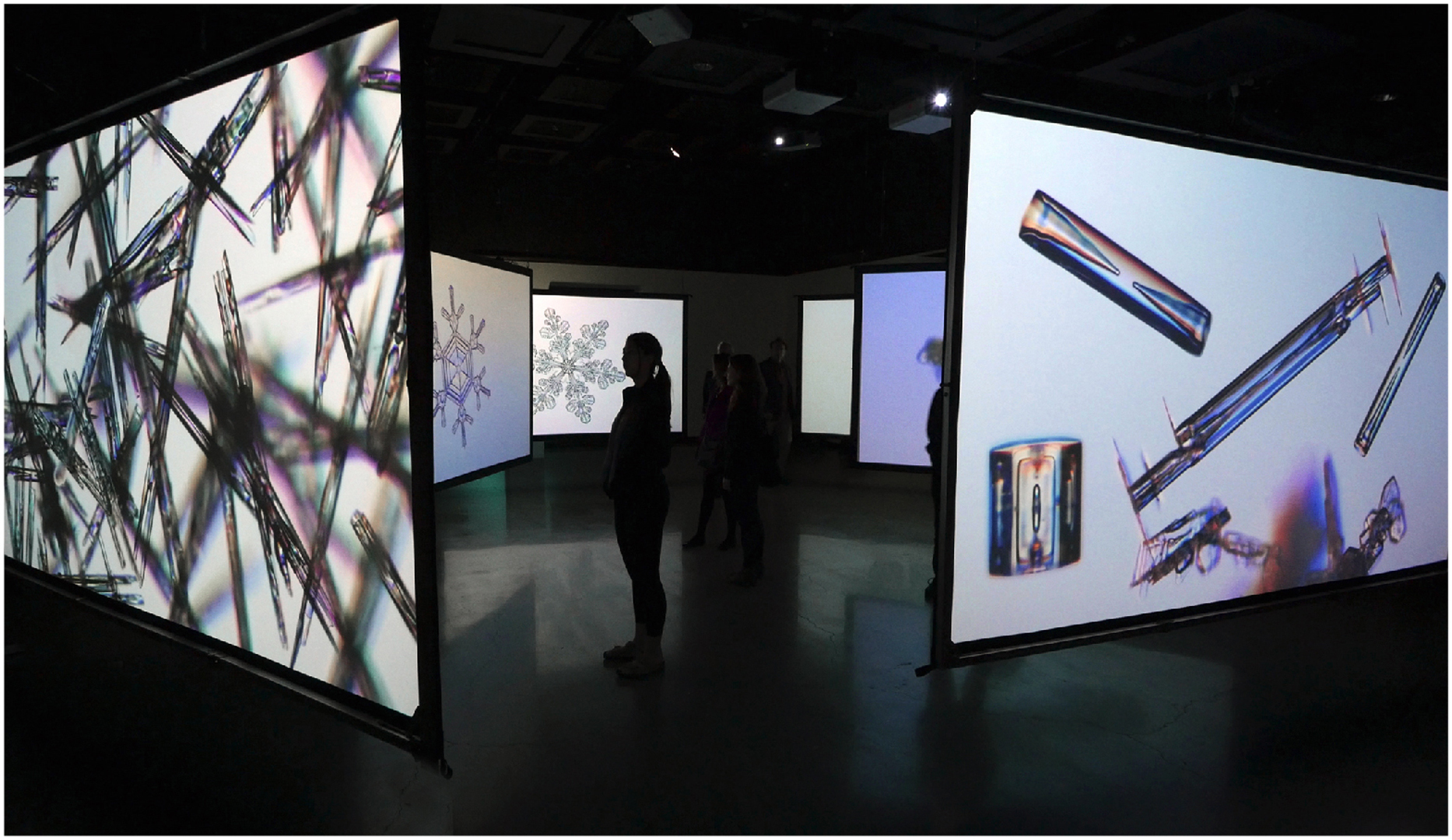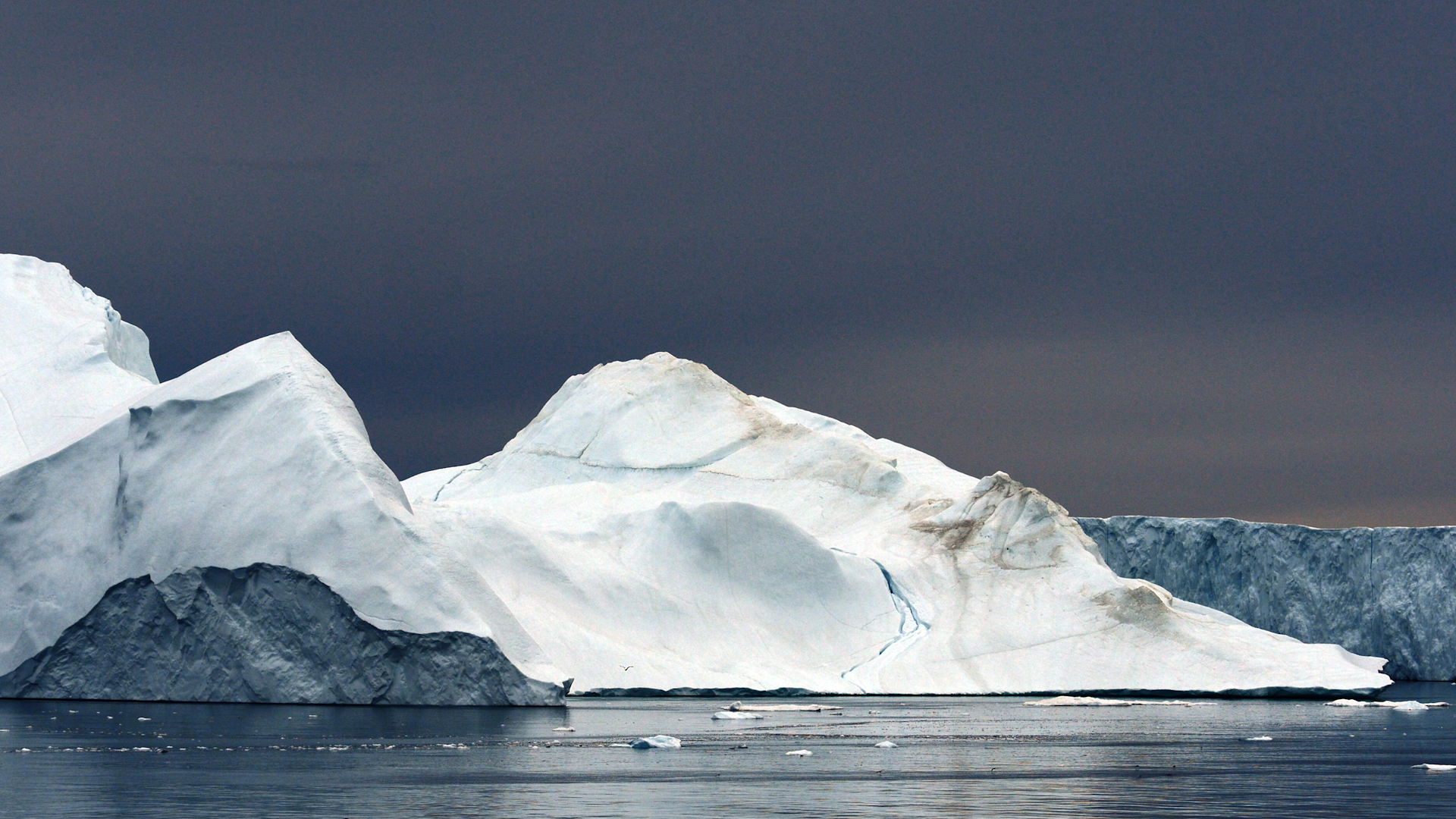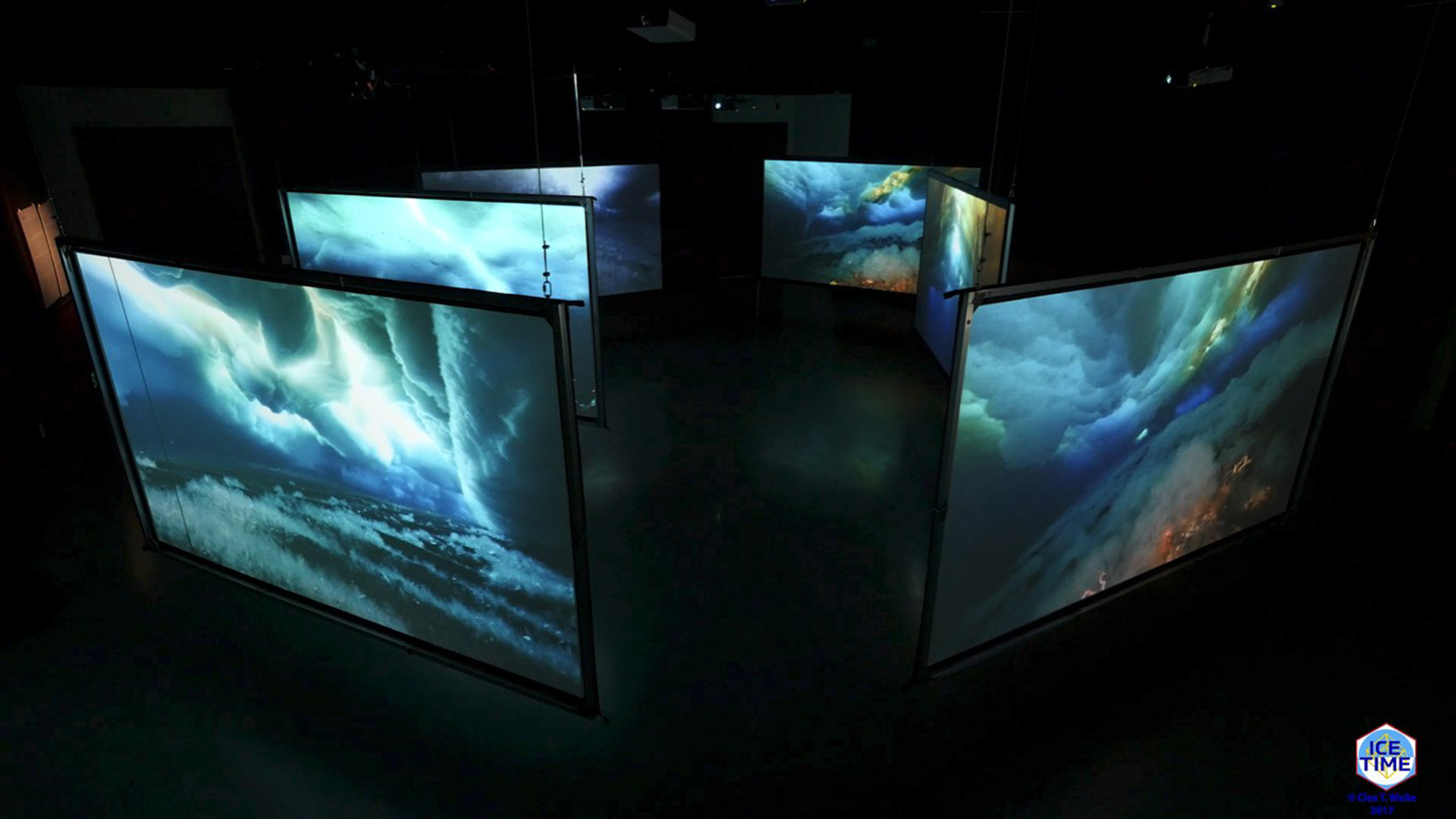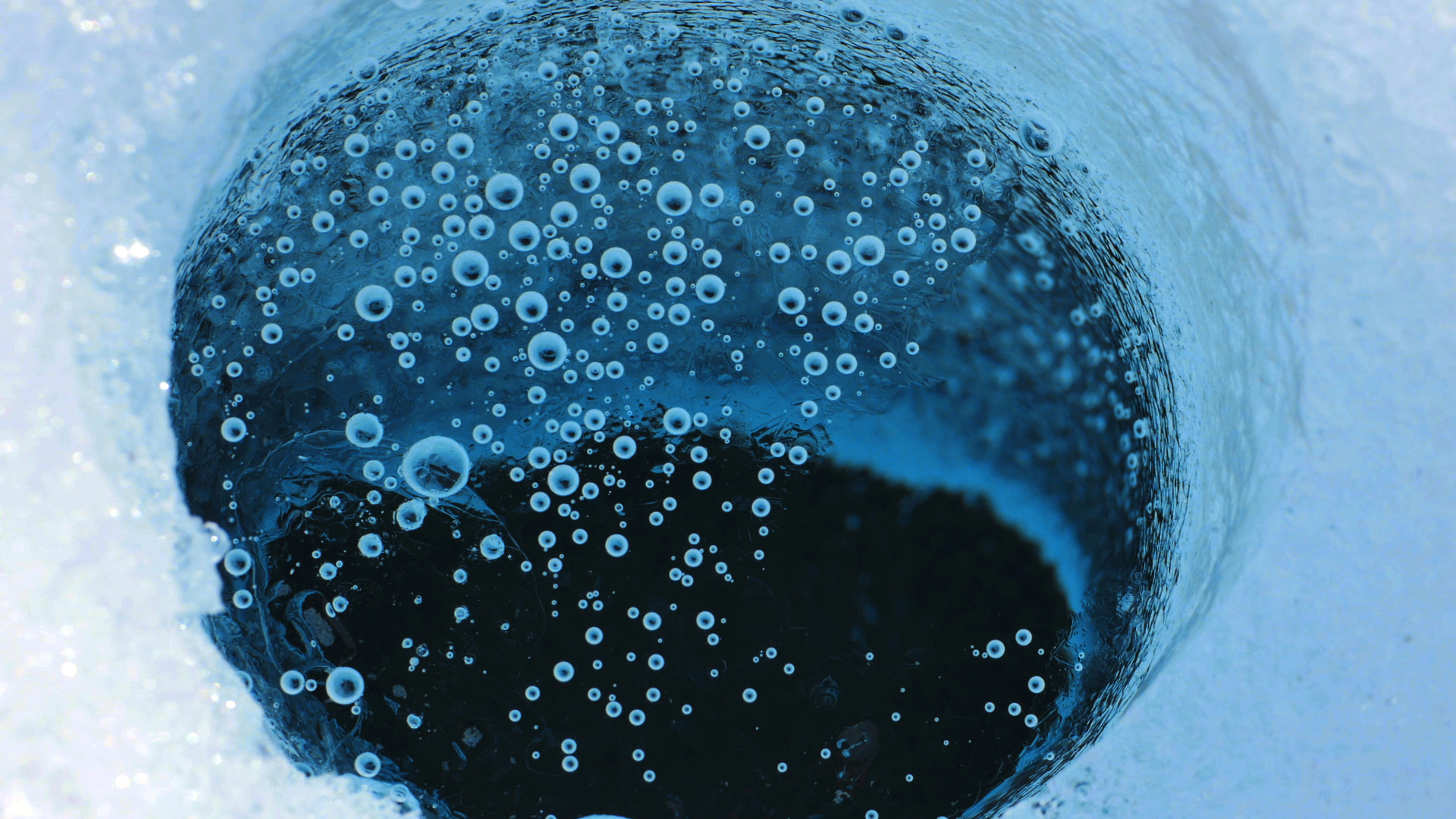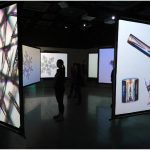Clea T. Waite, Angelika von Chamier: Ice-Time
Artist(s):
Title:
- Ice-Time
Exhibition:
- DAC Online Exhibition 2020: Digital Power: Activism, Advocacy and the Influence of Women Online
-
More artworks from DAC Online Exhibition 2020:


Category:
Artist Statement:
Climate change is a defining issue of our time. The geological provides a glimpse of deep-time as a supra-dimensional force – a four-dimensional perspective that subsumes both past and future and whose scope far exceeds human perception. The immersive cine-installation Ice-Time examines our culture’s altering perceptions of space and time, the deep-time of Earth’s environment, by using polar ice as a unique window onto issues of climate change.
Ice-Time is a singular cinematic portrait of ice, ranging from vast glaciers to individual crystals, created in response to the accelerating changes we are observing in Earth’s ecosystem. The stark iconography of ice used in Ice-Time serves as a distinct access point into the overwhelming complexity of climate change and its ramifications. It elicits the poetics of frozen water revealed by current geological research. The artwork documents this moment in glacial space-time, expressing the beauty and the rationality of polar ice at odds with the devastating chaos its disappearance portends.
Embodied immersion in the realm of ice, the direct experience of the cryosphere, plays an essential role in the process of creating and exhibiting the Ice-Time project. Filmed during a two-woman expedition to Western Greenland in 2016, the images and sounds of Ice-Time present hyper-realistic, amplified facets of ice taken at all scales, from the microscopic to the planetary. Our methodologies in the field and in the laboratory demonstrate the value of interdisciplinary art-science research and collaboration. The artwork Ice-Time distills contemporary culture’s psychic moment of a data-driven reality.
The movements of ice in the film are perceived as the effect of time on matter. Within each frame, the scales of time expand and contract, enfolding the viewer in variations of speed and distance. Six large projections and a 9.1-channel, three-dimensional ambisonic soundscape create a room-sized environment. The immersive environment is structured as a crystalline, cinematic tesseract. This hexagonal architecture echoes the structure of water crystals and hypercube shadows in three-space. Through a vivid, material presence of image, sound, data, and time, the immersive film establishes a physical interaction of form and content. The cine-installation creates an embodied, cinematic experience whose spatial poetics is deciphered by the somatic perambulations of the beholder. Ice-Time imbues the spectator with an embodied awareness of the environmental and cultural implications of polar ice, and the essential role ice plays in anthropogenic climate change.
Contributors:
The Ice-Time science collaborators include glaciologists Prof. Twila Moon at the University of Bristol whose research examines ice sheet surface fluctuations and Dr. Stephen Cornford who is modeling future sea-level rise caused by ice sheet reduction in Antarctica due to ice shelf breakup; physicist Prof. Kenneth Libbrecht at CalTech generating time-lapse documentation of the crystal growth of ice from his laboratory; Prof. David Holland and Dr. Denise Holland at New York University, studying long-term subsurface oceanographic observations along the periphery of the Greenland Ice Sheet; NSF science diver Henry Kaiser contributing original, professional under-sea-ice video recordings that would not otherwise be attainable; Prof. Douglas Quin at Syracuse University who recorded the sounds of Weddell seals echolocating under the Ross Ice Shelf; and researchers at the National Ice Core Facility, Dr. Joan Fitzpatrick, Geoff Hargreaves, and Eric Cravens. Our guides on the ice of Greenland played an invaluable role in the production: Jens Jonathan Andreassen, Johannes Madsen, Louise Tackmann, Pil Hangenboel Hansen, Ricky Lindy Nielsen, and Daudi Neilsen. We’re also grateful to Prof Stephen Hunter Flick, University of Southern California, and Jamison Moore, USC Institute for Creative Technologies, for their contributions to the project.
“Ice-Time” has been selected for a SXSW 2020 honorable mention, the Lumen Prize, Award for Art & Technology Shortlist 2019, the ArtSlant Prize IX, USA 2018, and a NAKFI Award 2016.
This project was made possible by generous funding from:
The National Academies Keck Futures Initiative, the Graduate School of the University of Southern California, the Media Arts + Practice Division, School of Cinematic Arts, USC, Canon USA, the Mary Pickford Foundation, the Gene Autry Foundation, and the Cagney and Lacey Foundation.
Video:
Clea T. Waite & Angelika von Chamier – Ice-Time from ACM SIGGRAPH on Vimeo.
Other Information:
Art+Science, Climate Change, Collaboration, Nature, and Poetry

